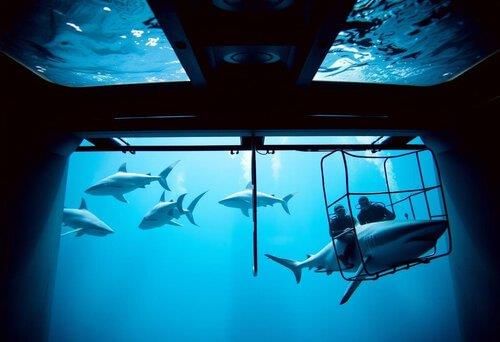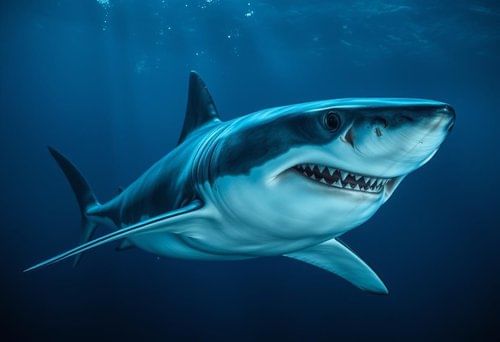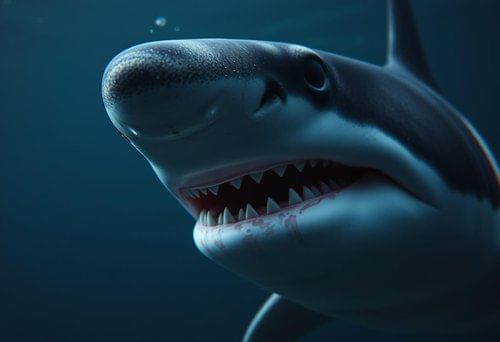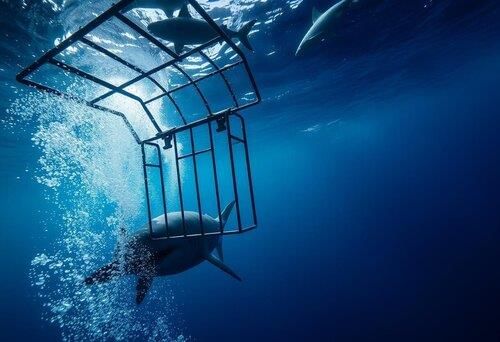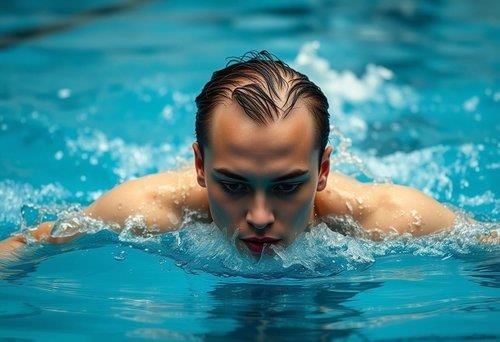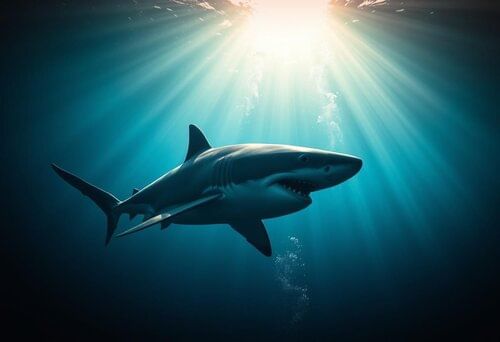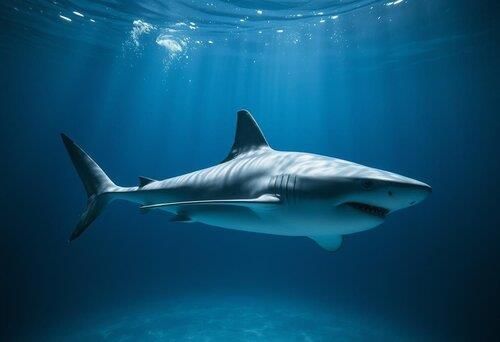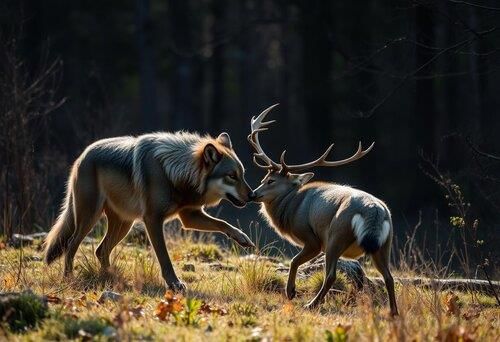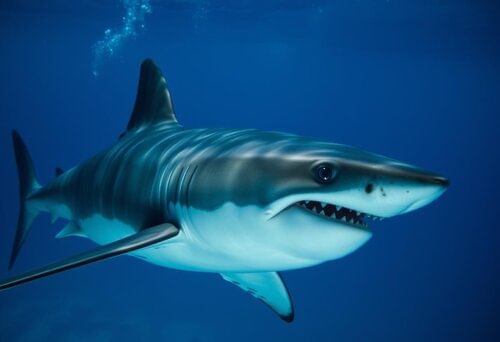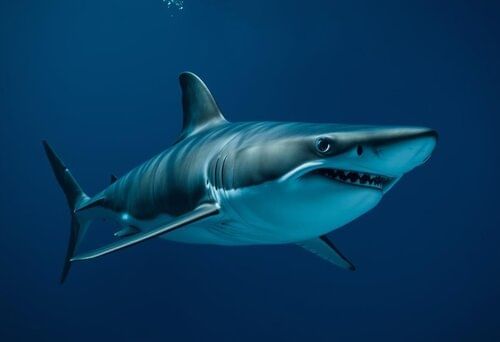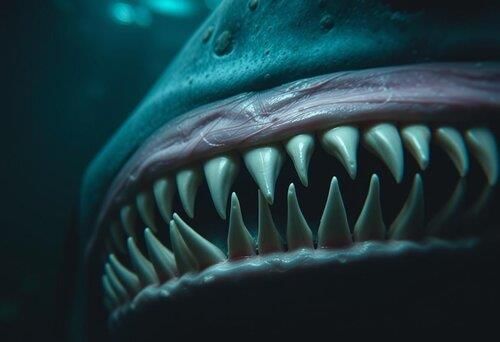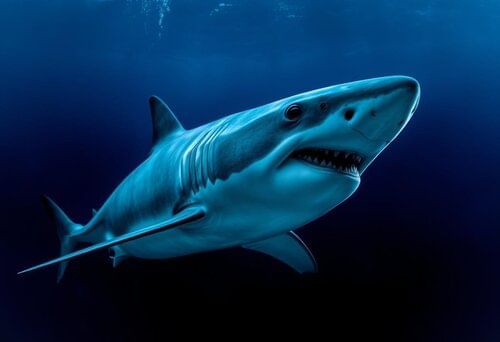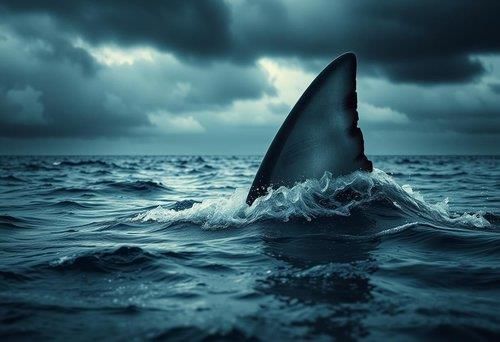|
What imagery is used to describe the great white shark in Peter Benchley's 'Jaws' when it circles a boat? |
Card: 1 / 50 |
The shark is depictedImagery of the Great White Shark in 'Jaws'
|
Card: 2 / 50 |
|
Fill in the blank: Hooper is lowered into the sea in a metal cage to photograph the shark, which ascends effortlessly like an '___ gliding towards an appointment.' |
Card: 3 / 50 |
|
True or False: The shark's approach is described as loud and aggressive, causing immediate panic. |
Card: 5 / 50 |
|
False: The shark's approach is described as silent and chilling, emphasizing its stealth. 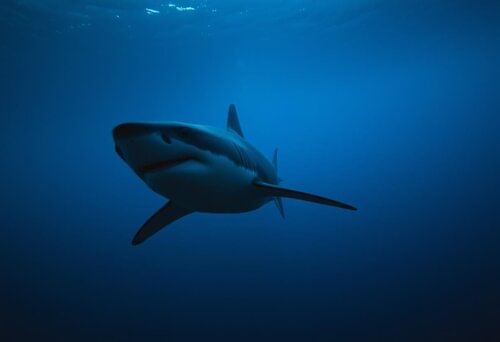 |
Card: 6 / 50 |
ShattersShark Cage Dynamics
|
Card: 8 / 50 |
|
Riddle: I glide through the water, silent and sleek, with teeth like knives and a powerful physique. What am I? |
Card: 9 / 50 |
Rippling GillsShark Gills: A Menacing Feature
|
Card: 12 / 50 |
|
Fill in the blank: The shark's immense size and strength are demonstrated as it passes Hooper, leading with its ___ followed by its slack jaw. |
Card: 13 / 50 |
Hooper recoilsThe Shark Encounter in 'Jaws'
|
Card: 16 / 50 |
|
Multiple Choice: What does Hooper hear as the shark moves away from the cage? A) Silence B) Faint pops C) Loud roars D) Water splashes |
Card: 17 / 50 |
|
What sensory mechanism allows the shark to detect the presence of the woman in the water? |
Card: 19 / 50 |
Thin CanalsShark Sensory Mechanism
|
Card: 20 / 50 |
|
Fill in the blank: The woman begins to swim with a ___ stroke, indicating her lack of formal training. |
Card: 21 / 50 |
|
True or False: The woman is aware of the shark approaching her as she swims farther from the shore. |
Card: 23 / 50 |
|
What physical response does the woman experience when she senses something amiss in the water? |
Card: 25 / 50 |
 Unlock all Flashcards with EduRev Infinity Plan Starting from @ ₹99 only
|
|
Riddle: I swim silently beneath the waves, sensing vibrations with my body's canals, and when I strike, it's swift and fierce. What am I? |
Card: 27 / 50 |
|
What psychological concept explains why our fear of sharks is not innate but learned? |
Card: 35 / 50 |
|
Fear is a learned response, derived from ancestral survival instincts to avoid dangerous animals. 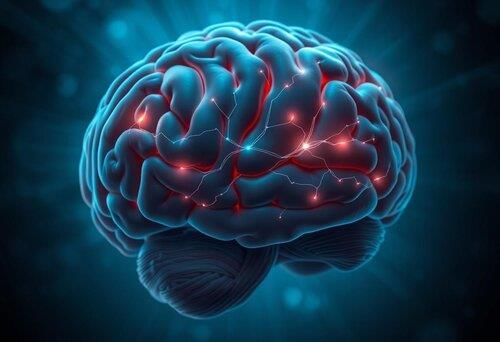 |
Card: 36 / 50 |
|
Shark attacks are rare when compared to other dangers; for example, ___ pose greater risks. |
Card: 37 / 50 |
|
True or False: The fear of sharks, known as galeophobia, is primarily based on actual statistics of shark attacks. |
Card: 39 / 50 |
FalseUnderstanding Galeophobia: The Fear of Sharks
|
Card: 40 / 50 |
|
Riddle: I swim in the ocean with teeth that can shred, yet most of the time, I’m not a threat to dread. What am I? |
Card: 43 / 50 |
|
Fill in the blank: The great white shark has mouths lined with up to ___ dagger-like teeth. |
Card: 45 / 50 |
|
What does marine biologist Blake Chapman indicate is a primary reason for the fear of sharks? |
Card: 47 / 50 |
|
What is the emotional response that overshadows the facts about shark attacks? |
Card: 49 / 50 |





